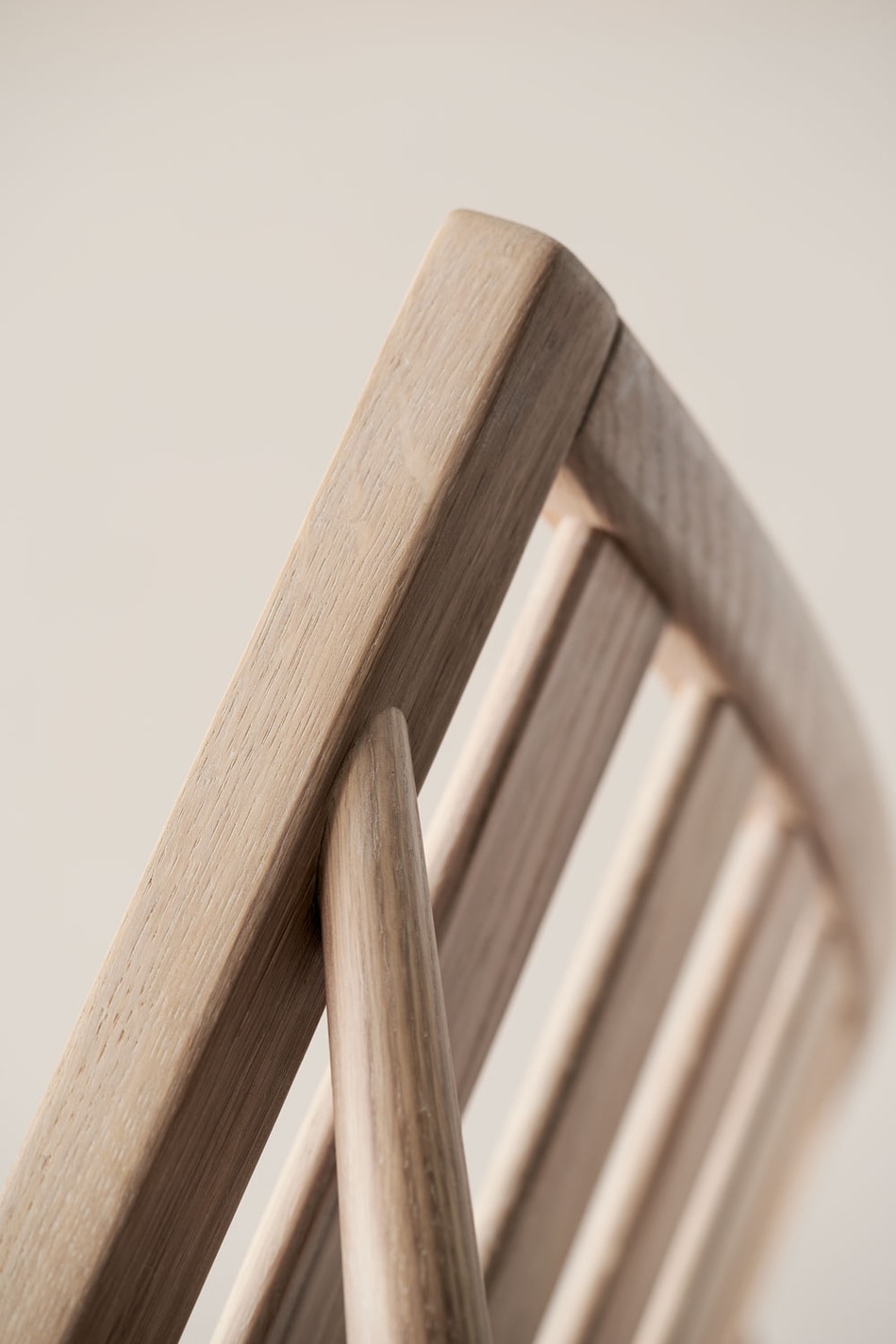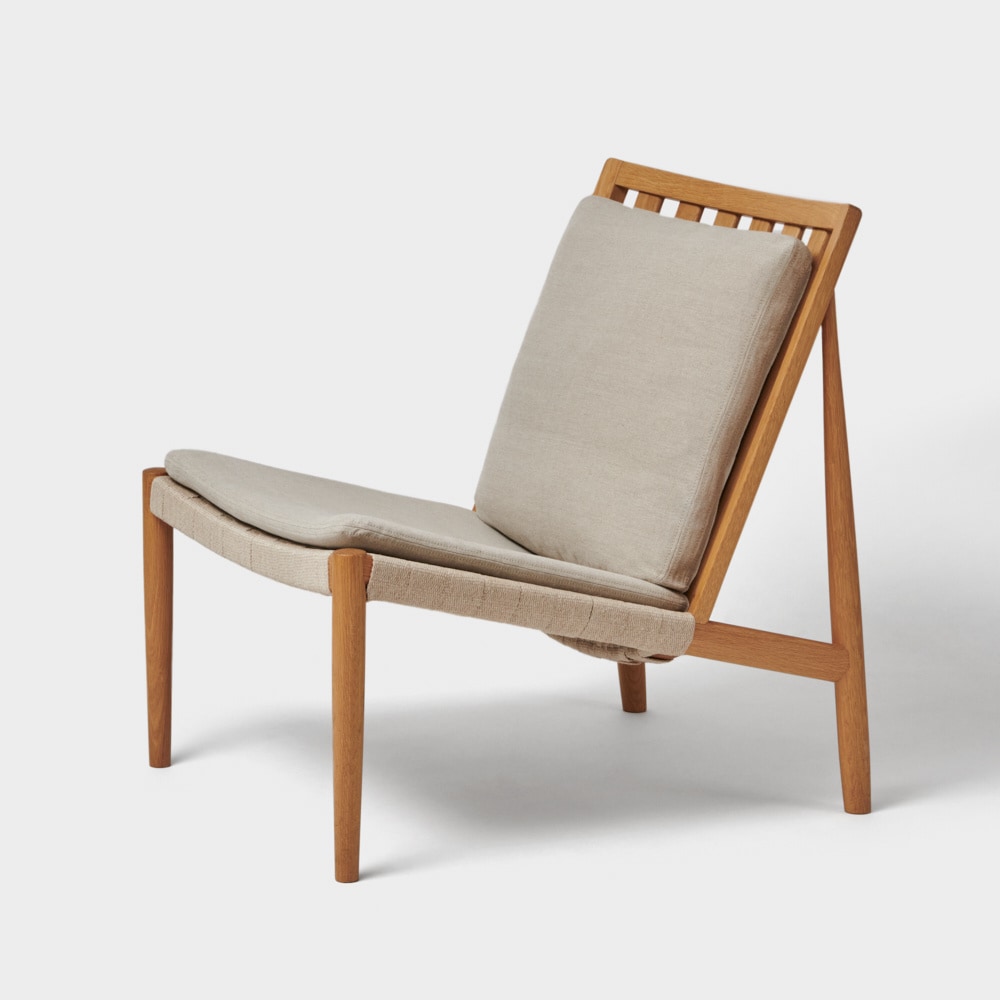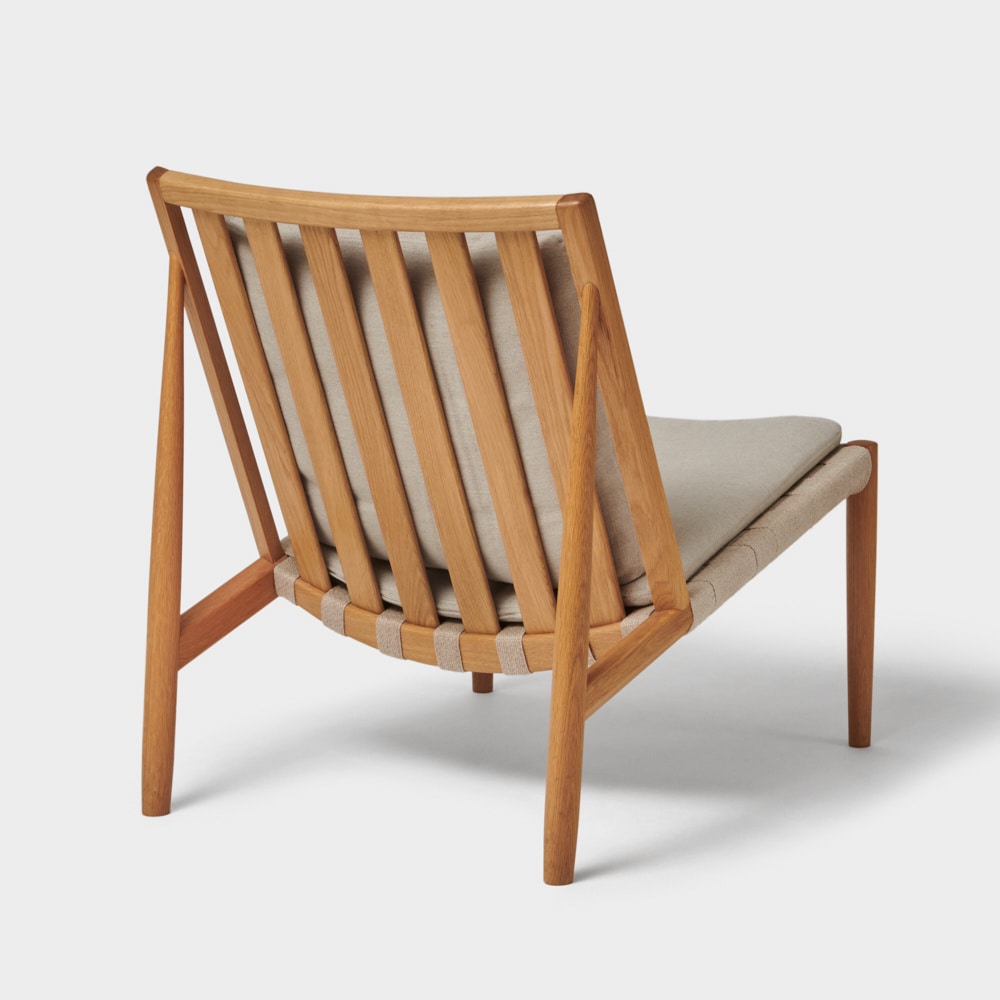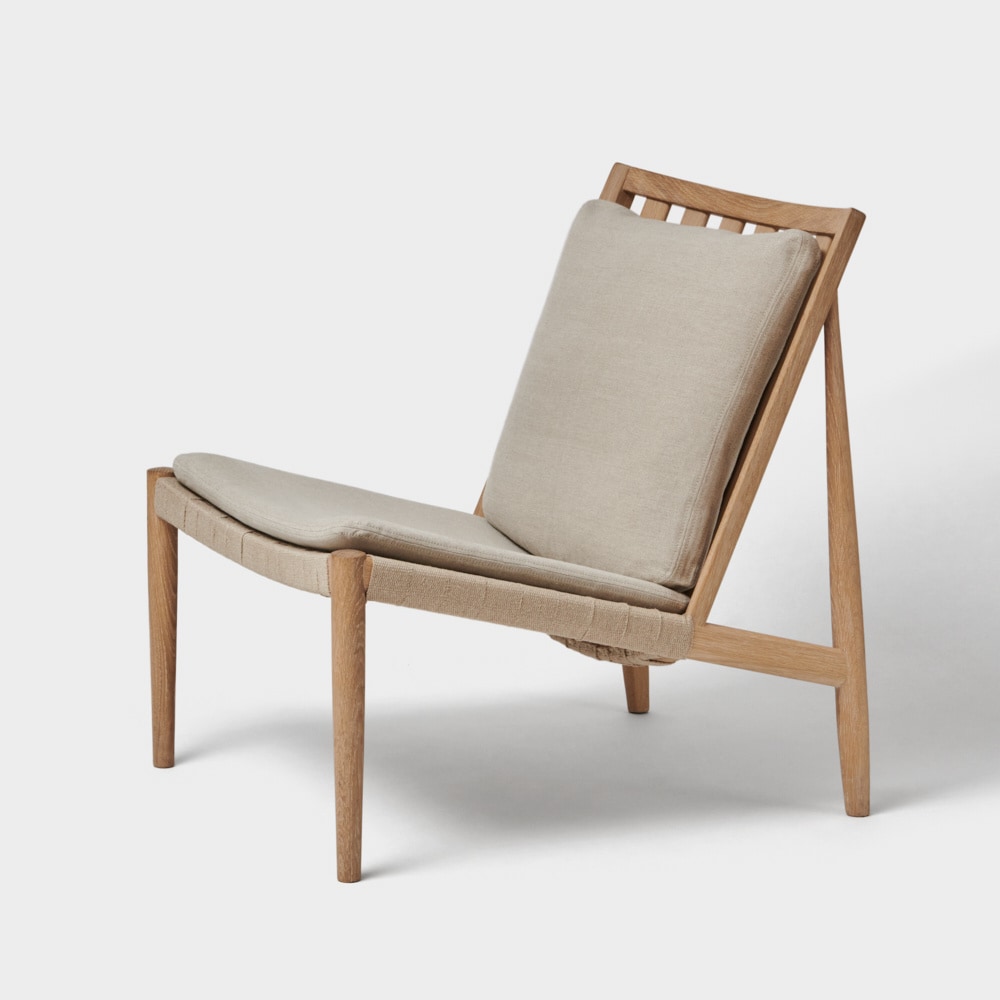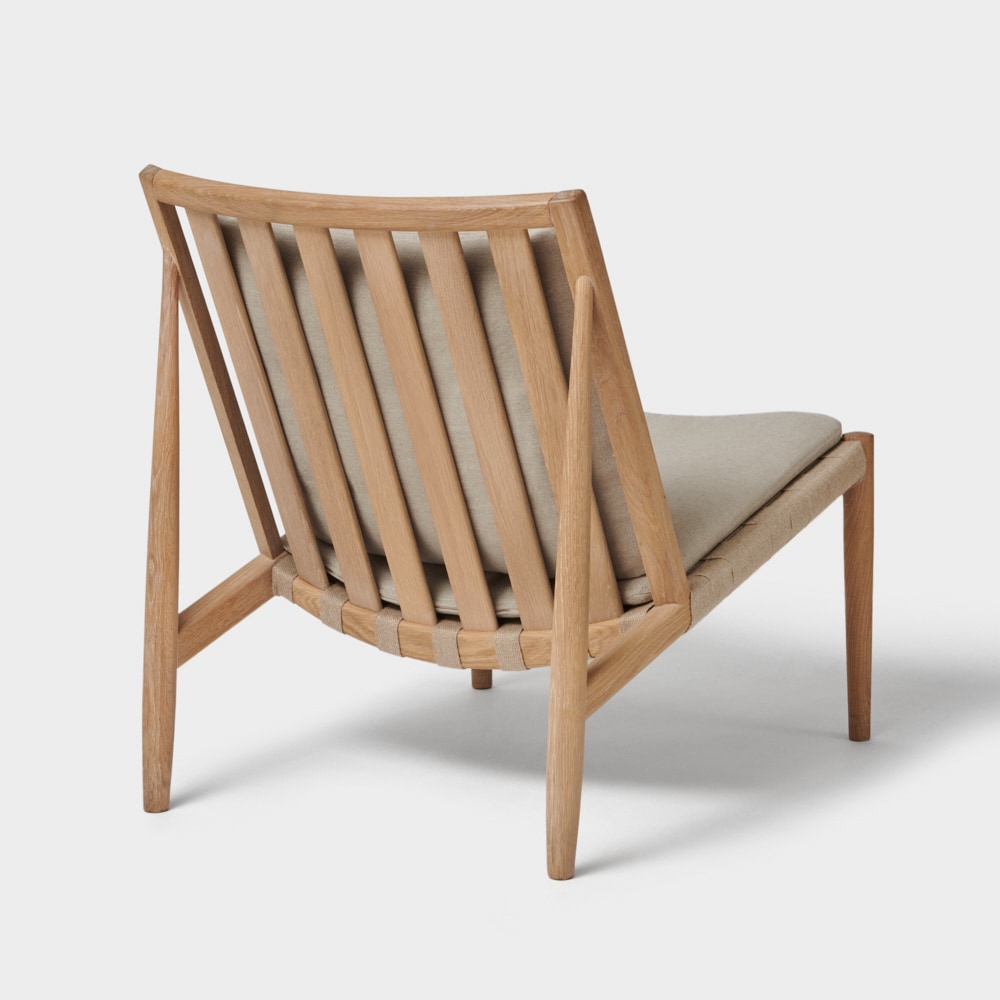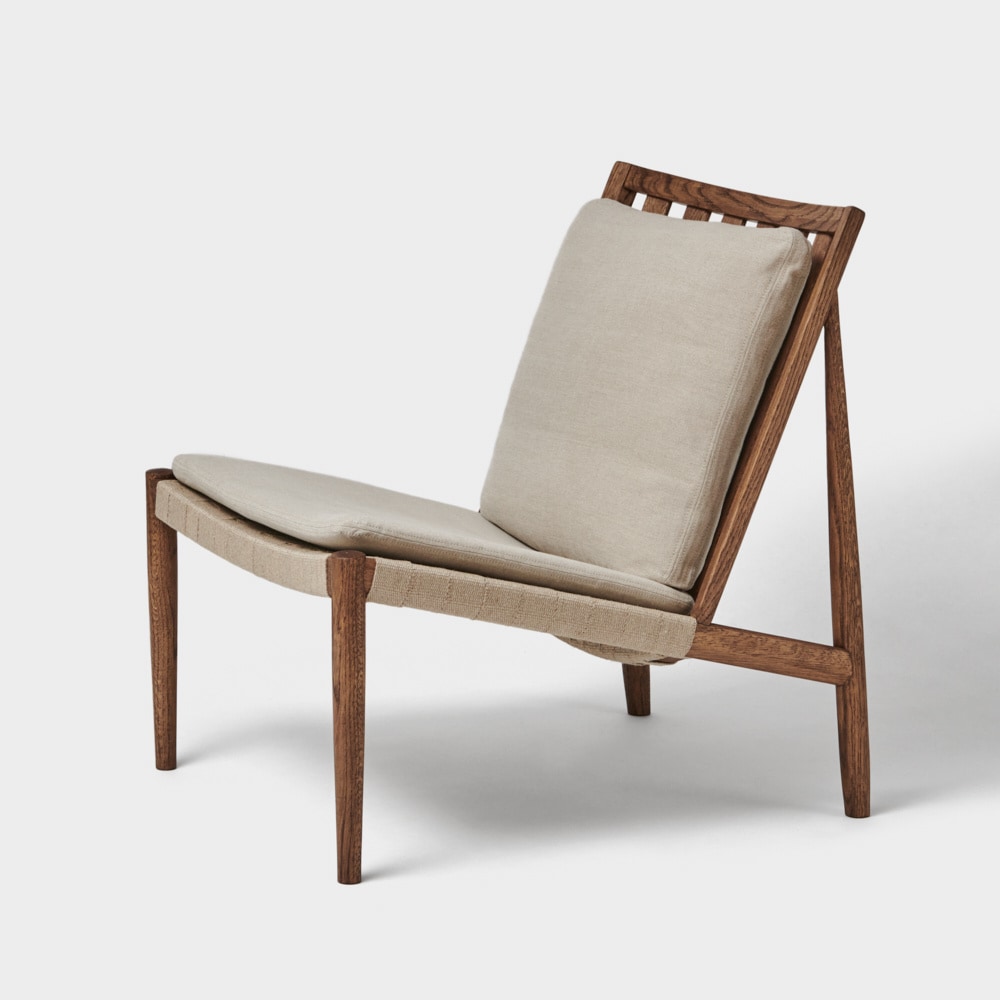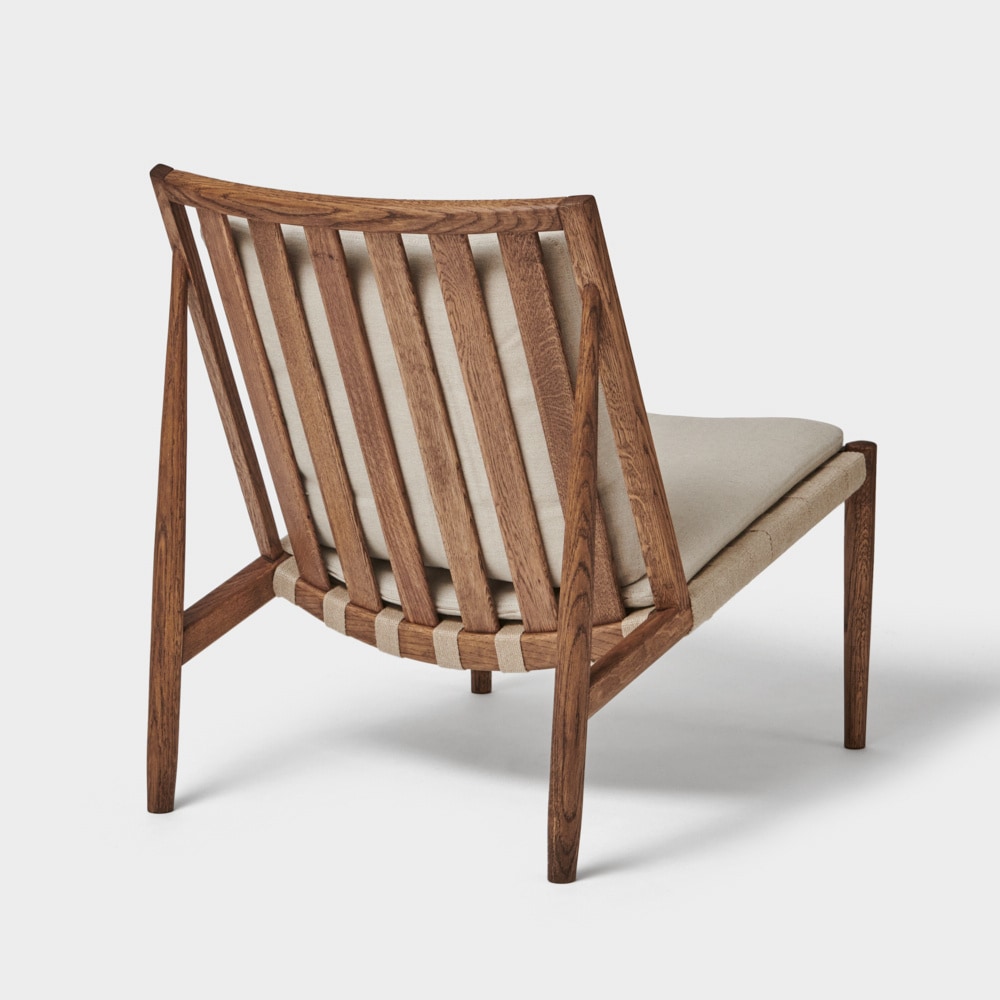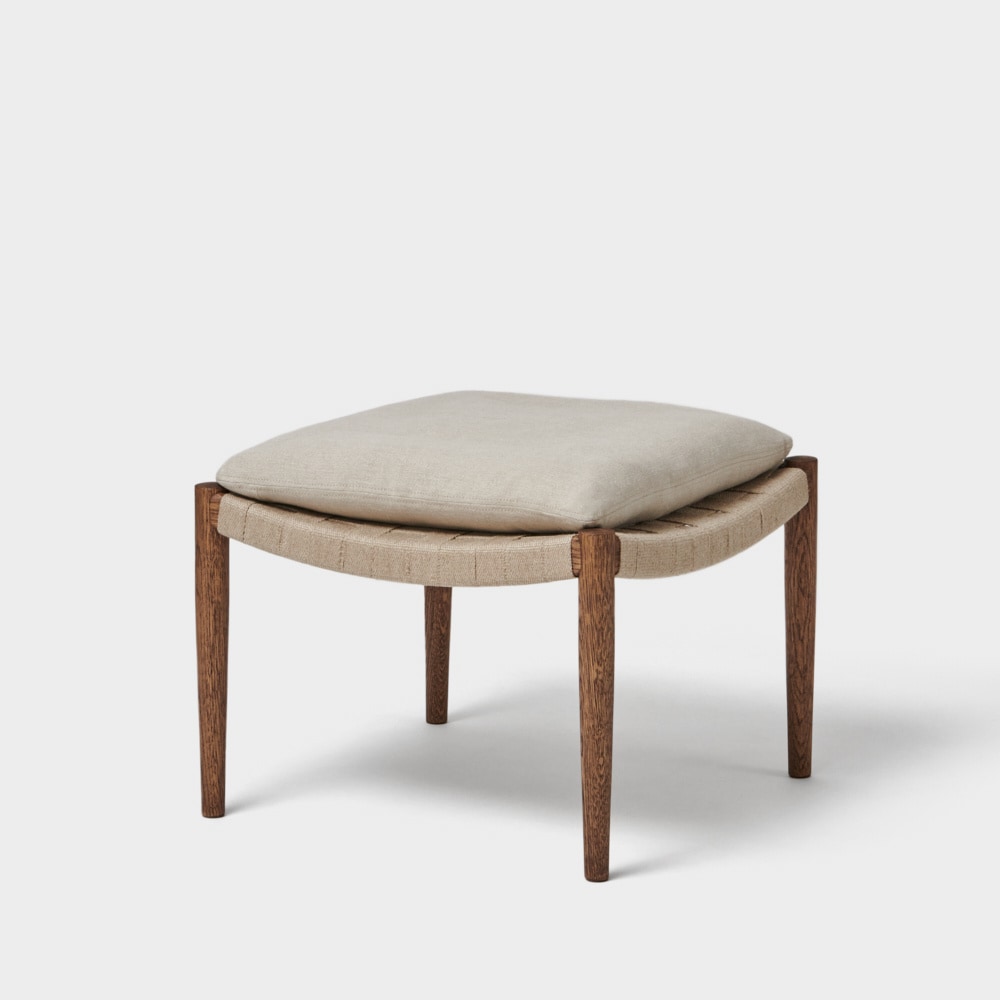
Easy Chair, oak with brown oil finish, upholstered in "Italian unbleached linen".
The Easy Chair was launched in 2016 but has already become a modern design classic – one of Norrgavel's most beloved pieces of furniture. A timeless armchair with a minimalist expression, where craftsmanship and seating comfort are pure perfection. The process of realizing the Easy Chair took several years of sketches, prototypes, and fine-tuning. To find inspiration for the Easy Chair, Norrgavel's founder and designer, Nirvan Richter, looked to Japan.
"The working name for the chair I longed for became Zazen – seated meditation."
"Sitting on the floor in Japanese houses is a special experience. No chair, more like being in nature, with refined simplicity – zen. A perfect sitting angle on a beautiful wooden frame, a saddle strap of linen supporting a seat cushion of horsehair and a back cushion of seabird feathers. Ascetic in its expression, but comfortable in its feel. You don't sit in a chair but in the space, as if floating in the air. Placing two next to each other is especially beautiful. Many of Norrgavel's furniture pieces have generic names, but what about this one? More than a chair, but "Armchair" is too stuffed... so we turned to English for help, and it became Easy Chair."
Nirvan Richter, formgivare
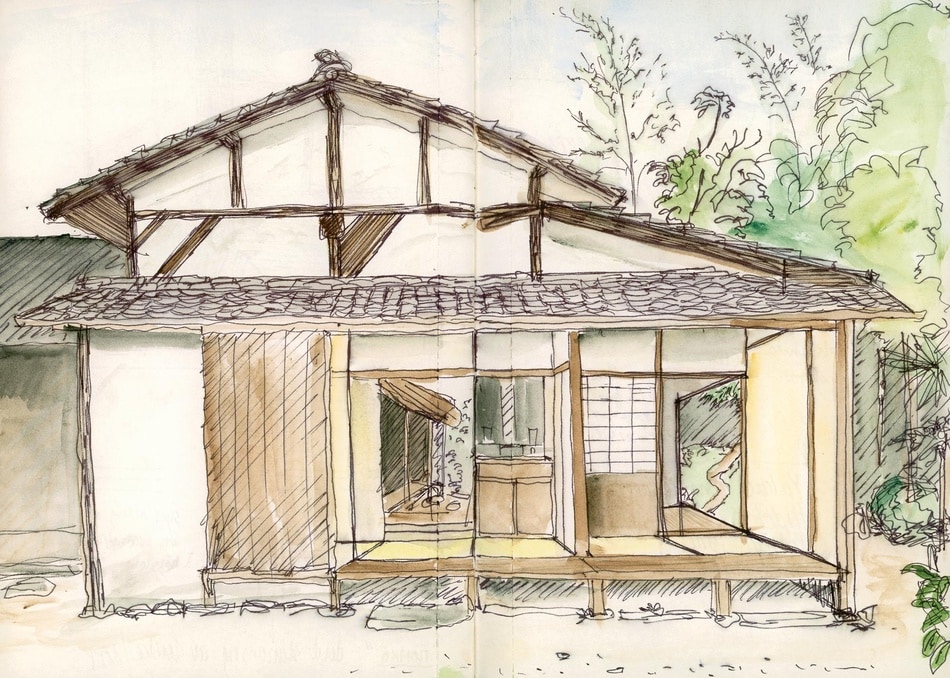
The sketch of the traditional Japanese house is signed by Nirvan Richter. Just like in these Japanese houses, the construction of the Easy Chair is intentionally stripped down and visible.
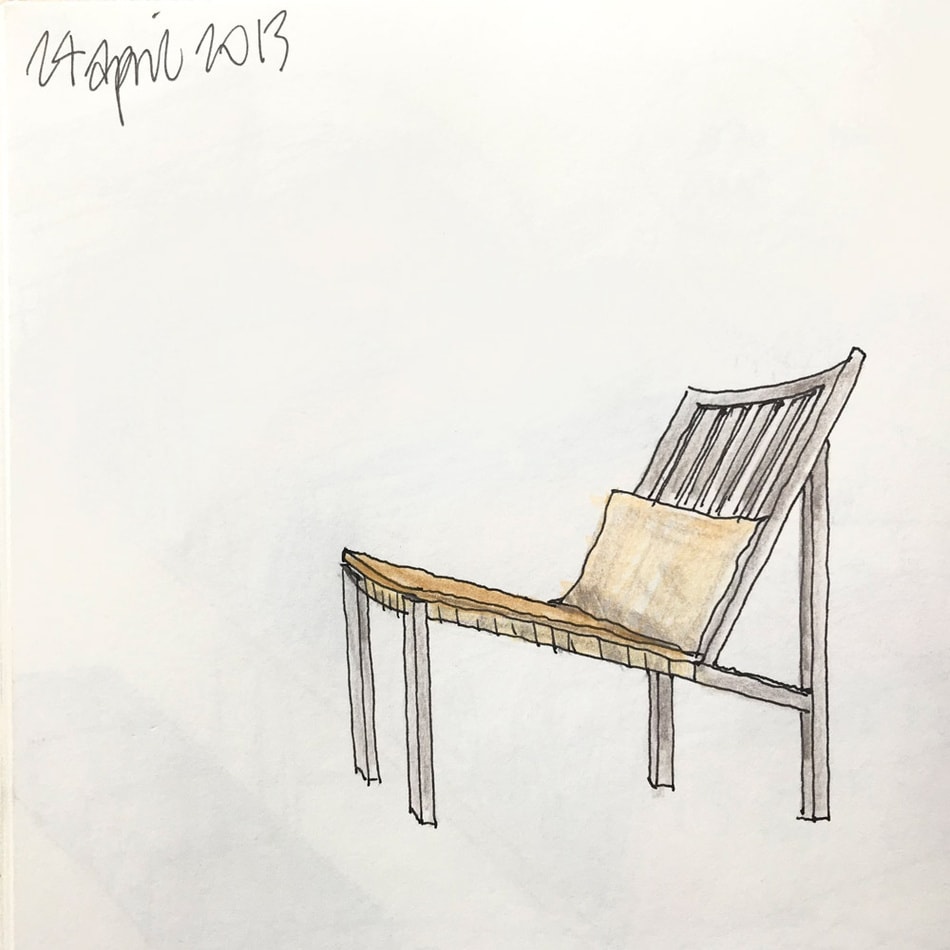
An early sketch or prototype, dated April 2013, for what would become the Easy Chair. The image is taken from one of the designer Nirvan Richter's many sketchbooks.
Unlike Western houses, which are often at their most beautiful before construction is "dressed up" with cladding and surface layers, the construction remains forever visible in the traditional Japanese house. The load-bearing framework is a skeleton on which the entire room design rests; between the wooden posts, there are fusuma (sliding doors with rice paper) and shoji (room dividers), and the floor is covered with tatami (rice straw mats). One sits or lies directly on the floor, with just a thin padded cushion or mattress as support.
The vision behind the Easy Chair is built on similar thoughts. The solid oak wooden frame is graphically clear – a simple sitting angle that is supported at the front by two vertical legs, with the seat's frame continuing backwards and meeting the rear legs in a stable truss structure – a stripped-down and forever visible construction, just like in the traditional Japanese house.
It is often said that all interior design is about creating a balance between open space and enclosed comfort. The Japanese house breathes openness while Western interiors often lean towards greater enclosure. The same dynamics exist in sitting itself; one sits on a chair, but in an armchair – and the Easy Chair falls somewhere in between.
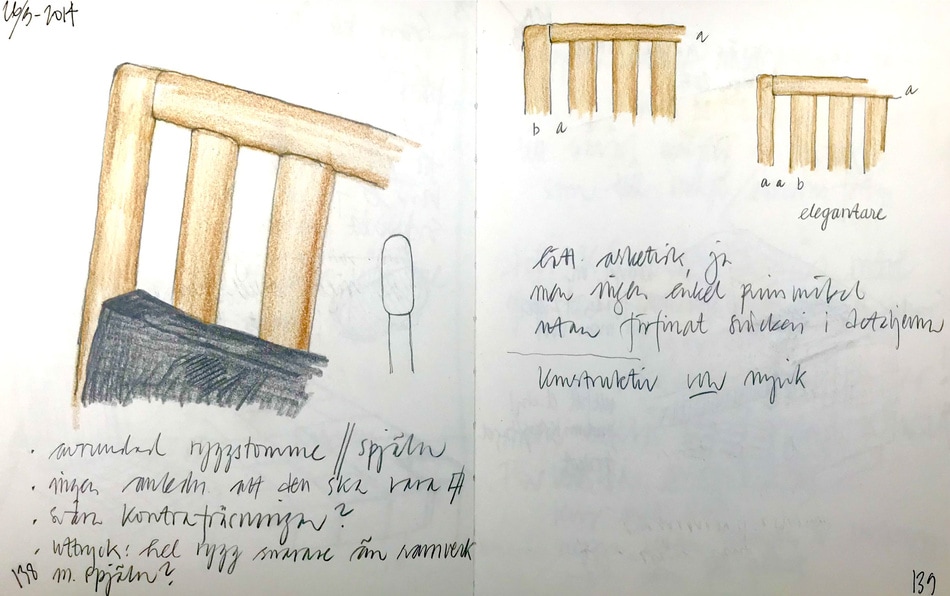
A sketch with accompanying notes from designer Nirvan Richter's sketchbook – dated 26/3 2014. The frame of the backrest, with its repetitive wooden ribs, is crafted and fine-tuned two years before the actual launch of the Easy Chair.
A trained eye and a conscious touch reveal further qualities in material encounters, profiles, compositions. The framework of the backrest is filled with repetitive wooden ribs that seamlessly transition into the frame of the seat with its floating saddle strap; the width of the ribs corresponds to the wide saddle strap, their spacing to the narrower one. The unbleached linen character of the seat contrasts with the oak frame in a manner reminiscent of tatami mats in the traditional Japanese house, and comfort is further enhanced with simple additions in the form of a soft seat cushion and a pleasantly comfortable back cushion.
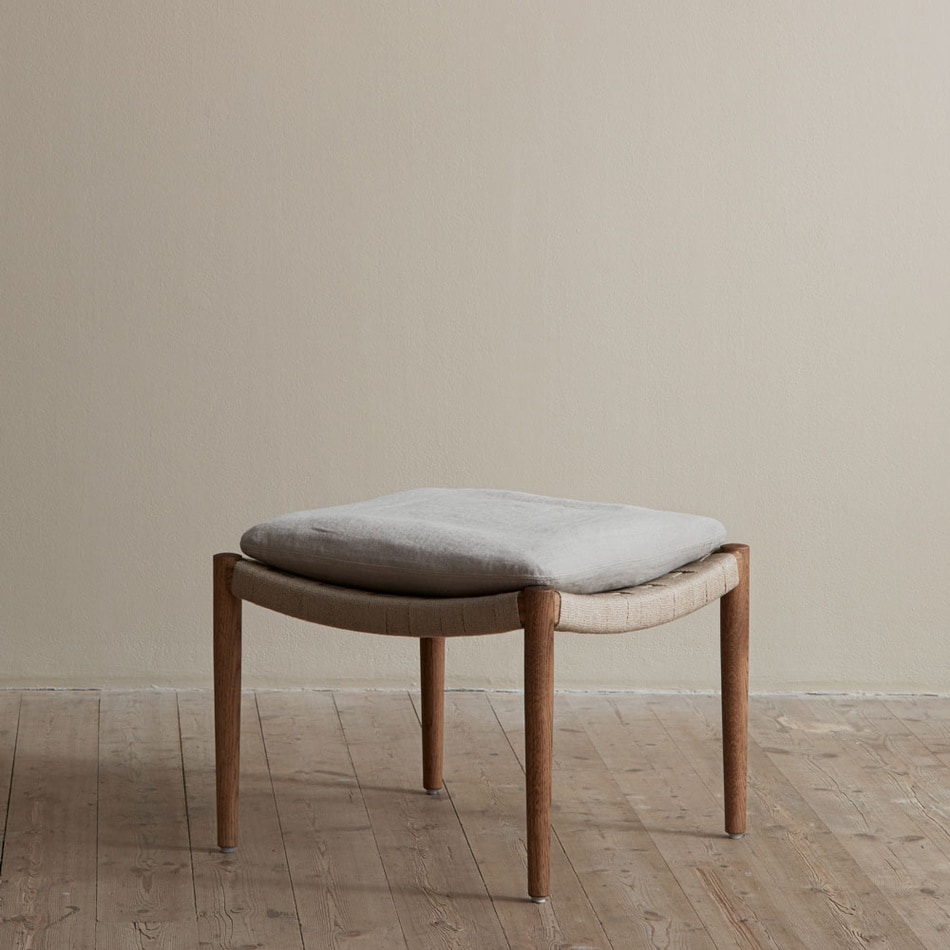
Add a matching Easy Footstool for extra relaxed moments.
Many of Norrgavel's furniture pieces have generic names, but what about this one? More than a chair, but "Armchair" is too stuffed... so we turned to English for help, and it became Easy Chair.
"In its classically archaic form, this little gem also fits well independently or alongside most other furniture pieces."
"The Thebes Stool is an ancient Egyptian piece of furniture that served as the inspiration for the Easy Footstool. As a teenager, I received a postcard from my parents from the Victoria and Albert Museum in London, and it has been on my mind ever since. Thousands of years... talk about timeless! The measurements and form are derived from the Easy Chair, which is indeed a chair to "sit" in, but it's also nice to be able to rest tired legs."
Nirvan Richter, designer

Choose a finish and upholstery to create a personal expression for your Easy Chair.
Offer for all Norrgavel friends
Package deal! Easy Chair Duo & Package deal! Easy Chair & Easy Footstool
Did you know?
» The working name for Easy Chair was long "Zazen" - which means sitting meditation.
» Easy Chair is made of pure and comfortable natural materials - solid oak, saddle strap in linen, and a cushion filled with sea bird feathers. Additionally, the seat cushion is constructed of rubber hair, wool felt, and has a cover of cotton twill.
» The solid oak frame is treated with oil or pigmented oil (white oil, brown oil). The brown oil treatment gives the wood a deep and charismatic expression - an environmentally friendly alternative to dark, tropical wood species.
» Easy Chair can be upholstered in vegetable-tanned leather from Tärnsjö Tannery, chrome-free leather from Danish Sørensen, or relaxed and exclusive furniture textile in 100% linen - "Linne Flandern" or washable "Linne Italian Unbleached".
» There have been requests for armrests on the Easy Chair, but designer Nirvan Richter believes it should be a different armchair. What distinguishes the Easy Chair is its openness to the room, which would be compromised if the seating area were closed off with armrests on the sides.
» There is a matching footstool available for the Easy Chair – Easy Footstool.
» In 2019, the Easy family was expanded with the Easy Daybed.
» The Easy Chair is one of the most popular pieces of furniture in Norrgavel's range and consistently ranks in the top three.
» All Norrgavel furniture is still hand-sketched to this day. The company's founder and designer, Nirvan Richter, personally creates both furniture sketches and sketches for store interiors by hand. He keeps these sketches in beautiful notebooks stored in a safe. A rich history of furniture design lies within these nearly 40 fully filled sketchbooks, spanning over three decades of furniture design.
» The sketchbooks used by Nirvan Richter are purchased from a carefully selected paper shop in Gamla Stan in Stockholm (Studio Barbara Bunke). These are handmade sketchbooks with covers lined with Norrgavel's furniture textile.
